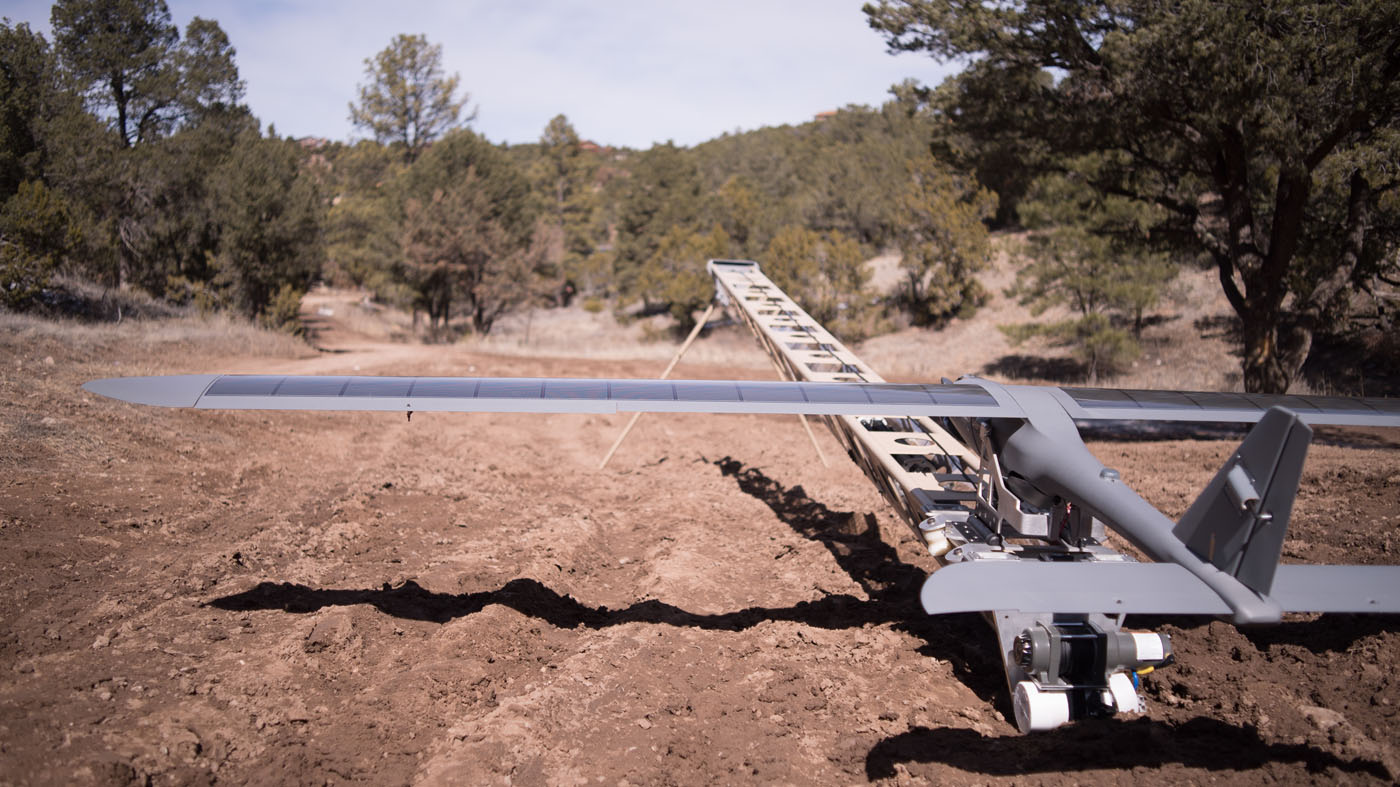Trump’s Special Ops Pick Says Terror Drones Might Soon Reach the US from Africa. How Worried Should We Be?
Technological advancement could produce ocean-spanning consumer UAVs. But extremists won’t necessarily bother with them.
On a dusty beach in far western Africa, a group of men hop out of a pickup truck. They quickly assemble a small commercial drone and send it winging northwest across the Atlantic Ocean. A bit more than a day later, it will make landfall over the southeastern U.S. coast — its explosive payload still intact.
Advances in batteries and solar power could make this a reality, warns Owen West, whom President Donald Trump has tapped to oversee the Pentagon’s special operations and low-intensity conflicts.
“In about five years, drones will be able to be launched from Africa which can reach our shores, because they’ll have permanent power by the sun,” West told lawmakers last week during his confirmation hearing.
How likely is this scenario?
The hard part isn’t the deadly payload
Last year, the Islamic State became the first non-state actor to arm a commercial drone. Since then, the group has been particularly inventive , using an assortment of grenade-droppers, kamikaze bombers, and flying decoys against Iraqi and U.S. forces advancing on Mosul . Special Operations commander Gen. Raymond Thomas called it the “most daunting problem” of the past year.
Nice shot of the improvised release mechanism ISIL is using to drop grenades from commercial off the shelf UAVs https://t.co/Lj8Ltx0arQ pic.twitter.com/KCuzhUbndb
— Alex Mello (@AlexMello02) January 11, 2017
U.S. lawmakers are taking note as well. “This is different from trying to tackle unmanned systems used by state actors — these are terrorists using a commercial product modified to drop a small bomb or self-destruct. It’s a serious threat to our ground troops,” said Sen. Joni Ernst, R-Iowa, who chairs the Senate Armed Services Emerging Threats subcommittee.
Related: The Drones of ISIS
Also read: I Could Kill You with a Consumer Drone
But West , who worked at Goldman Sachs as a futures trader, said he’s used to thinking about technological and socioeconomic trends some three to five years out.
The U.S. and other militaries already have large drones with long ranges. What the Pentagon calls its Group 4 and 5 unmanned aerial systems (UAS) can already transit vast distances and stay aloft for up to a day at a time. The U.S. Army’s MQ-1C Grey Eagle , for example, has a 25-hour endurance, and the larger MQ-9 Reaper can fly over 1,150 miles.
The quadcopters of ISIS are much more modest affairs, able to stay aloft for 20 or 30 minutes. Is the commercial market really headed toward building small drones that might fly thousands of miles across the unforgiving open air of an ocean?
“The short answer is yes,” said Matt Scassero, who runs the University of Maryland’s Unmanned Aircraft Systems Test Site . “The technology will be there to support that kind of flight operations.…Long-range drones will be able to fly across the oceans within a fairly short amount of time, possibly five years.”
To make that possible, a “quadrumvirate” of technological fields would need to continue advancing, he said:
- Propulsion systems, including electric motors, need to get more powerful and efficient;
- Solar cells need to be lighter, more flexible, and able to convert a higher proportion of light into electricity;
- Batteries must be able to store more energy and deliver it in useful amounts;
- And finally, flight management systems: “autopilots, all of the autonomous, unmanned systems that pull it all together and actually let it operate with a minimum of human control.”
There’s a boom of established companies and small startups alike pushing those technologies forward, chasing what they say is a largely untapped commercial market. Customers include industrial farmers who want to track the health of their crops, gas companies that want to monitor their pipelines, and others who want drones that can fly farther and stay aloft longer.
One such startup, Advanced Aircraft Company, is developing a hybrid-electric small drone called Greased Lightning, a commercial variant of a design the company’s founder worked on at NASA. Like the V-22 Osprey and other tiltrotor aircraft, Greased Lightning marries conventional aircraft design with a vertical takeoff and landing capability.
“You have conventional airplane UAS that are launched from catapults and have large recovery equipment like nets or skyhooks or things like that. And basically those aircraft, the advantage is like a normal airplane, it gets a very good lift-to-drag ratio,” said Bill Fredericks, the company’s founder and CEO. “But the downside is takeoff and landing. Either you need a big runway, or you need all that big recovery equipment.”
On the other hand, there are “vertical takeoff and landing UAVs, either more conventional-looking helicopters or multirotors. And the problem with those is they’re not very aerodynamically efficient, and therefore they can’t fly nearly as long as a typical airplane can.”
Greased Lightning is designed to capture the advantages of both sides of that divide. It can fold eight of its 10 propellers down to optimize efficiency after liftoff, helping it to fly for up to 24 hours, according to AAC’s website.
It’s probably still a few years away from production, but just a short while ago, something like the Greased Lightning wouldn’t have been feasible.
“Really, what’s enabled this new aircraft configuration is the electric motor propulsion technology,” Fredericks said. “Electric motors are really unique, and good efficiency and good power-to-weight electric motors are a relatively new thing to come to the market.”
So given the pace at which his quadrumvirate of enabling technologies are advancing, Scassero said the futures trader-cum-Pentagon nominee’s prediction isn’t that far off, at least when it comes to the basic flight operations and range of the drones.
Not everyone’s that optimistic — or pessimistic, depending on how you look at it.
Peter Singer, a strategist at New America’s Future of War project, said even if a lot of of these technologies make it to market in the next few years, that doesn’t mean they’ll be a threat.
“It requires the kind of technologies that are mostly prototype right now, so what you’re saying is, ‘Something that’s been prototype, is now successful,’ and second, ‘Some group like Boko Haram has gotten its hands on that technology,’” he said. “I have a tough time visualizing that timeline within five years.”
Some of the capabilities like Greased Lightning are just prototype right now, but others are already fielded commercially. If not in ocean-crossing form, at least in ways that show how the boundaries of small drones can expand beyond an immediate area — or a local battlefield.
Silent Falcon , a subsidiary of Bye Aeronautics founded seven years ago, has an eponymous solar-powered drone already in the market that can fly 200 kilometers out with a mobile ground station, or a hundred out and back without it.
“It’s electric-powered, but we supplement the electricity stored in the battery with power we generate from the solar panels on our wings,” said John Brown, Silent Falcon’s founder and CEO. “That’s what gives us the ability to stay up in the air a long time.”

It’s also portable. The whole system — two aircraft, launch equipment, ground station and all — fits in the back of a pickup truck, and then snaps together and launches in 30 minutes, according to Brown.
“We take off with a catapult, and land with a parachute, so anywhere you can get a pickup truck, you can utilize our system,” he said. “The portability is a big deal for when you’re doing things like pipeline monitoring or power line monitoring.”
Neither Silent Falcon nor Greased Lightning are quadcopter-cheap — a Silent Falcon system runs several hundred thousand dollars — but the prices on these technologies will come down as they become more widespread, Scassero said.
And as they do, that portability has implications for the battlefield too.
But strategically…
Five years out, maybe a few more, the technology could be there for transatlantic voyages, but that’s probably not the highest-priority threat when it comes to countering weaponized commercial drones. For one thing, that’s probably not where extremists groups are going to put their efforts, Singer said.
“I think we’re more likely to see examples copying what ISIS did in Iraq, using small drones to carry small munitions and/or collect intelligence, and maybe using that against different targets,” he said. “The risk is less the extreme ‘solar crossing oceans’ [drones] than someone taking one of these technologies and flying it into a civilian building in that country, maybe even a U.S. civilian building either commercial or an embassy or a base facility.”
Still, long-endurance commercial drones might allow extremist groups in North Africa to target Europe. And if anyone wanted to hit the U.S. with a weaponized commercial UAS, there are closer places to launch from than the western Sahel, Fredericks suggested. ISIS does have something of a foothold in the Western hemisphere, military leaders say .
“It totally is achievable to have, I’ll call it a Group 3-size UAS of a conventional airplane configuration that could cross an ocean, but then the question is why,” Fredericks said. “Why would you fly it all the way across an ocean when you could fly it from the Caribbean or from Mexico into this country?”





